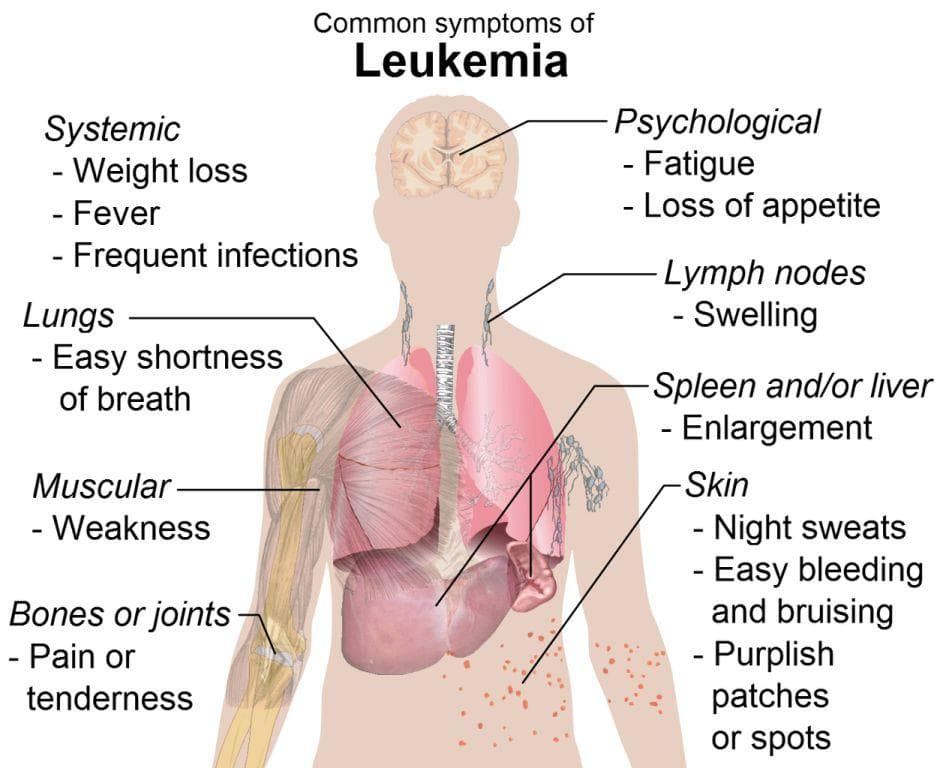Comprehensive Guide to Leukemia: Types, Causes, and Risk Factors
Leukemia is a serious blood cancer with multiple types and risk factors. This comprehensive guide covers the different forms of leukemia, their causes, and how exposure to chemicals, radiation, and genetic factors can increase risk. Understanding these aspects aids early detection and effective treatment options. Learn about symptoms, diagnosis, and the importance of lifestyle changes to reduce risk and improve outcomes. Stay informed on the latest advancements in leukemia research and therapies to better manage this disease.

Comprehensive Guide to Leukemia: Types, Causes, and Risk Factors
Leukemia is a complex and aggressive form of blood cancer that originates in the bone marrow, the spongy tissue inside bones where blood cells are produced. It disrupts normal blood cell production, leading to the proliferation of abnormal white blood cells that can crowd out healthy cells, causing symptoms like fatigue, frequent infections, bleeding, and anemia. According to reports from The Leukemia and Lymphoma Society, nearly 60,140 new cases of leukemia are diagnosed globally each year, highlighting the importance of understanding this disease for early detection and effective treatment.
This disease manifests in several primary forms, classified mainly into four main categories, each with unique characteristics and treatment protocols:
Acute Lymphoid Leukemia (ALL): Common among children but also affects adults, characterized by rapid growth of immature lymphoid cells.
Acute Myeloid Leukemia (AML): Originates from myeloid cells, frequently seen in adults and associated with aggressive progression.
Chronic Lymphocytic Leukemia (CLL): A slower-growing leukemia that predominantly affects older adults, involving mature lymphocytes.
Chronic Myeloid Leukemia (CML): Marked by an abnormal chromosome known as the Philadelphia chromosome, leading to uncontrolled growth of myeloid cells.
In addition to these common types, rarer forms of leukemia exist, each presenting with overlapping symptoms that can complicate diagnosis. Accurate identification of the specific leukemia subtype is critical because treatment options such as targeted therapy for CML or immunotherapy for ALL depend heavily on the precise diagnosis.
While the exact causes of leukemia remain largely unknown, researchers have identified various risk factors that can predispose individuals to develop the disease. Understanding these risk factors can help in early detection and prevention strategies:
Tobacco exposure: Smoking tobacco introduces a host of carcinogens into the body that can damage the DNA of blood cells, increasing the risk of leukemia. Studies suggest that smokers are at a higher risk of developing certain leukemia types, and quitting smoking can significantly decrease this risk over time. Treatment approaches may need to consider the disease stage and the patient’s overall health profile.
Chemical exposure: Prolonged or high-level exposure to certain chemicals, such as benzene (used in the chemical industry and present in gasoline fumes), pesticides, and certain solvents, has been strongly associated with increased leukemia risk. Occupational safety measures and limiting exposure to these chemicals are important preventive steps.
Radiation exposure: Elevated levels of ionizing radiation—such as from nuclear accidents, radiation therapy, or occupational hazards—have been linked to a higher incidence of leukemia. Managing exposure risks and adhering to safety protocols are essential in reducing this risk.
Additionally, individuals with pre-existing blood disorders like polycythemia vera, myelodysplastic syndromes, or other myeloproliferative disorders are at an elevated risk of developing leukemia. Genetic syndromes such as Down Syndrome and Li-Fraumeni Syndrome also increase susceptibility to leukemia due to genetic mutations affecting cell growth and DNA repair mechanisms. A family history of leukemia further indicates a potential inherited risk, especially when related to genetic predisposition or inherited syndromes.
In some cases, bone marrow transplants are necessary as part of leukemia treatment, especially for recurrent or resistant cases. Recognizing and understanding these risk factors allows healthcare professionals and individuals to make informed choices about lifestyle modifications, early screening, and preventive measures. While leukemia can be a devastating diagnosis, advances in research and targeted therapies continue to improve prognosis and survival rates, highlighting the importance of awareness and early intervention.





